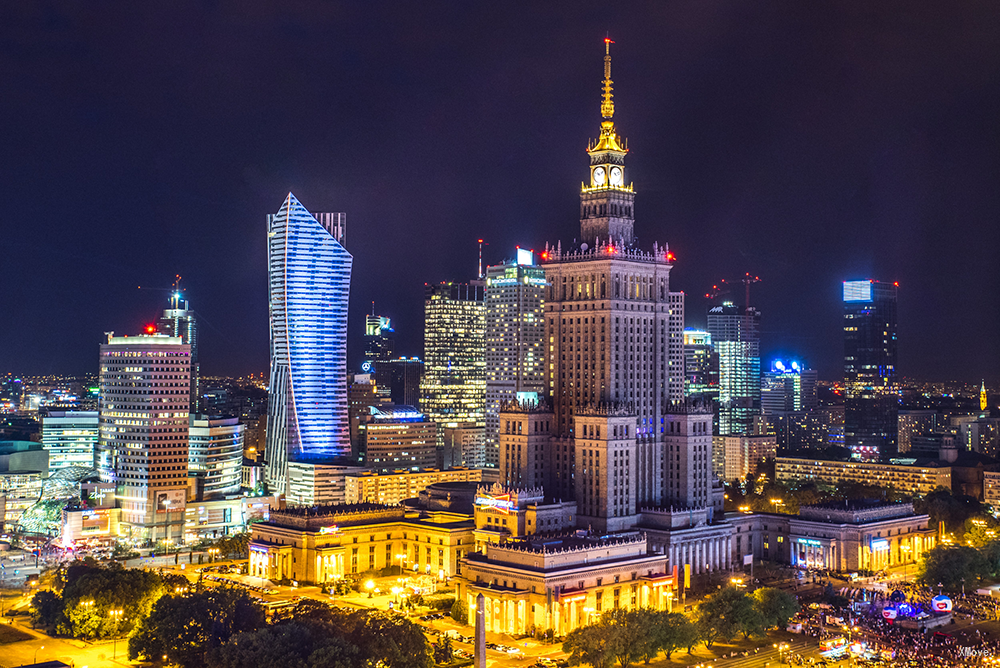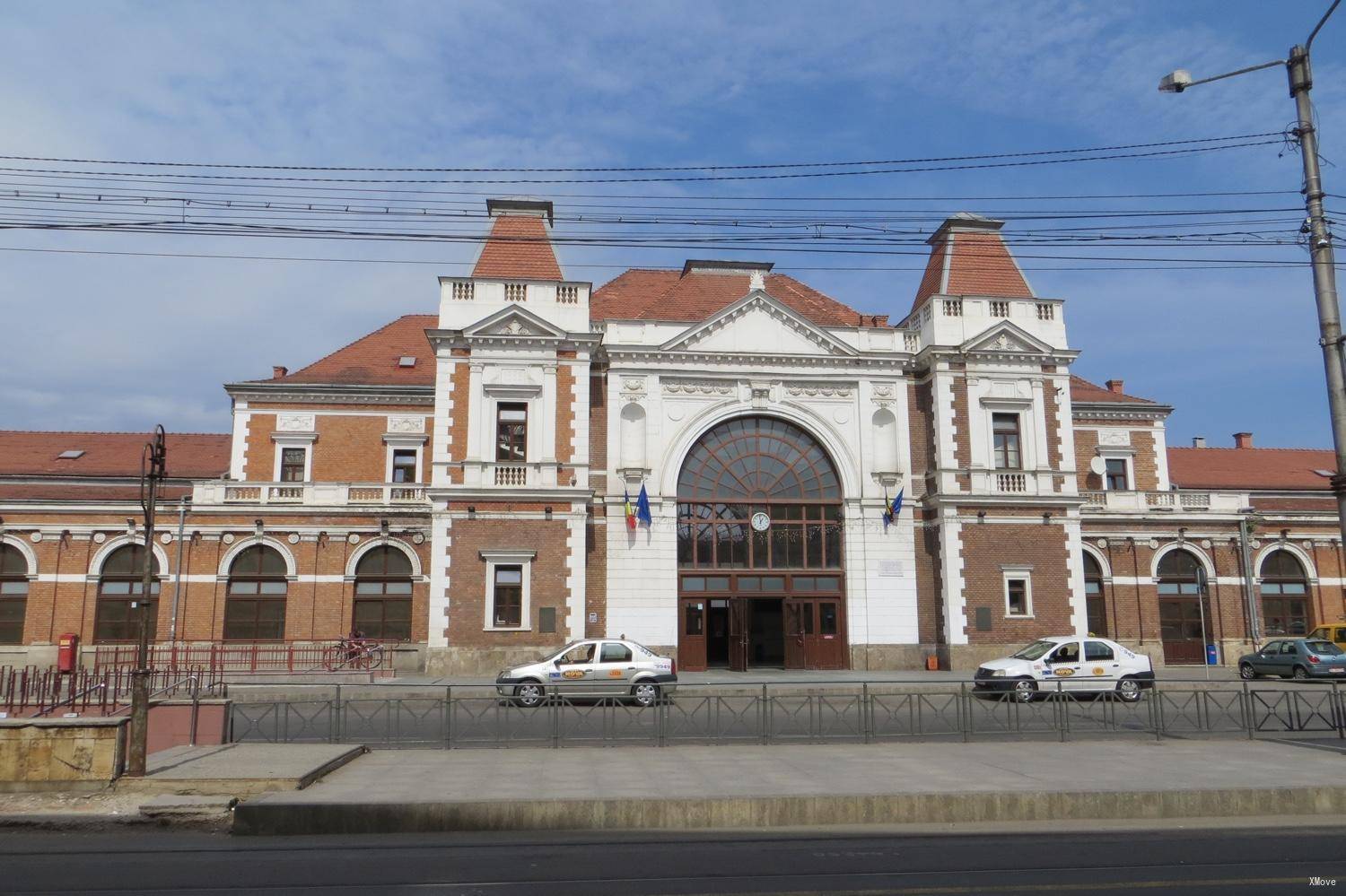Warsaw to Cluj Napoca: Trains, Buses, Fares, Today's Connections, Routes, Duration, Types of Trains, Station Guides, Tips, Journey
Poland Train Tickets
Train schedule Warsaw(Warszawa) to Cluj Napoca
Popular train routes departing from Warsaw(Warszawa)
* Sopot
* Katowice
* Celle
* Bratislava Hlavná Stanica(Bratislava Hl.St.)
* Minsk
* Gdansk Glowny(Gdańsk Główny)
* Krakow Głowny(Kraków Główny)
* Gdansk Glowny(Gdańsk Główny)
* Poznan Gl.
* Malbork
* Prague Central(Praha Hlavní Nádraží (Prag Hl. N.))
* Torun Glowny
* Sopot
* Berlin Gesundbrunnen
* Saarburg(Bz Trier)
* Berlin Lichtenberg
* Berlin East(Berlin Ostbahnhof)
* Berlin (Main Underground)(Berlin Hbf (Tief))
* Brussels Airport Zaventem(Bruxelles National Aéroport(Zaventem))
* Frankfurt Central(Frankfurt(Main)Hbf)
* Berlin Central Station(Berlin Hbf)
Popular train routes arriving in Warsaw(Warszawa)
* Hlavní Nádraží V Berlíně(Berlin Hbf)
* Štrasburk(Strasbourg)
* Basilej, Badischer Bahnhof(Basel, Badischer Bahnhof)
* Vídeň Meidling(Wien Meidling)
* Basilej Sbb(Basel Sbb)
* Berlín Lichtenberg(Berlin Lichtenberg)
* Letiště Leipzig / Halle(Leipzig/Halle Flughafen)
Popular train routes departing from Cluj Napoca
Popular train routes arriving in Cluj Napoca

Warszawa
City Overview
Warsaw is the capital and largest city of Poland. It is located on both sides of the Wisła River, about 350 km from the Baltic Sea and the Carpathian Mountains. The famous Warsaw Convention was signed in Warsaw. The city is also the capital of the province of Masovian, with many industries (manufacturing, steel, electrical engineering, automation), 66 institutions of higher learning (including Warsaw University), and more than 30 theatres.
Warsaw is currently divided into 18 administrative districts, and the entire city is divided into two by the Wisła. The economy and public security in the west of the river are better than those in Hedong. The Śródmieście district is the city centre of Warsaw. There are a few high-rise buildings. The Warsaw Central Railway Station and the Warsaw Central Metro Station as well as the major banking malls and supermarkets can be found here. Compared with other European countries, Warsaw is very wide and there are not many attractions, so the sightseeing spots are scattered and need to travel by car. There are many bus routes in Poland, and you can basically reach the entrance of the scenic spot directly, so you don't have to go too far. Warsaw was completely destroyed during World War II, so even the old town of Warsaw is reborn.
Must visit attractions
- ##### Warsaw Old Town Stare Miasto
The old buildings in Warsaw are all restored and reconstructed, but they do not affect people's appreciation of its beauty. The Old Town contains many attractions such as the Mermaid Statue, the Royal Palace, the Old Town Square, and the Curie Museum. In the old town, you can spend half a day slowly admiring the surrounding buildings and sampling local specialties. (Image courtesy of wiki, CC copyright, author Marek and Ewa Wojciechowscy)
Transportation: Metro: Get off at the Metro Ratusz Arsenał stop and walk east for about 10 minutes; Bus: 116/175/178/180/195/222/503/N44, PL.Zamkowy/Stare Misto station; Tram: 13 , 23 , 26 , 32 to get off at Stare Miasto station , the bridge to the old town . * ##### Warsaw Holy Cross Church Smaller Basilica of the Holy Cross
The Church of the Holy Cross (Polish: Kościół św. Krzyża) is a Catholic church in the centre of Warsaw. Located on the Krakowskie Przedmieście, facing the main campus of Warsaw University, it is one of the most famous Baroque churches in Warsaw. It was built in 1682 and completed in 1757. It was destroyed in 1944 and later rebuilt. It is currently managed by the deportation gods.
The Holy Cross Church, famous for burying the famous Polish musician Chopin, is separated from the Polish University by a street. In addition to Chopin, there are many Polish cultural celebrities buried in the church. The place near the church is the Katyn massacre. Monument, on the street not far from the church door, there is a Chopin music bench, don't miss it, the sound of nature.
Address: ul. Krakowskie Przedmieście 3
- ##### Chopin Museum Chopin Museum
The Chopin Museum was built to commemorate the great Polish musician Chopin. Located in the heart of Warsaw's famous Chopin University of Music, the site was chosen in a Baroque palace built in the late 17th century. The palace called Ostrogsky was burnt down by the Germans in September 1944, after World War II. Reconstructed and served as the seat of the Chopin Association. The remodeled Chopin Museum is a modern multimedia museum with an exhibition area of 5,000 square meters and 11 exhibition halls.
Address: ul Okólnik 1
Gourmet & Accommodation & Shopping
- ##### Gourmet
In the history of Poland, Germany and Russia have received great influence from the two empires. The food culture is no exception. It is located at the intersection of Europe and Asia. The traces of integration between the East and the West are very obvious, so pig feet, potatoes, dumplings, etc. are common. Eat food; and the use of spices is frequent, regardless of food or drink.
- ##### Accommodation
Poland is not a very popular tourist country, so there are fewer options for accommodation, but prices are cheaper than in other European countries. Warsaw Old Town, Warsaw Central Railway Station is surrounded by intensive areas. Compared with other European cities, Warsaw is very wide and there are not many attractions, so the tourist attractions are scattered and need to travel by car. However, there are many bus routes in Poland, and basically all of them can directly reach the entrance of the scenic spot.
- ##### Shopping
In Warsaw, amber is almost ubiquitous, wool products can be seen everywhere, you can pick some small folk items with folk customs to commemorate.
Urban traffic
The public transportation system in Warsaw is well developed, with about 200 bus lines, 30 tram lines and a subway line running from north to south through the west of the city. At 7:00 in the morning and 4-6 in the afternoon, it is the peak period for commuting. The main roads in Warsaw will be very congested. Although it is more distracting than God, it is also distracting. It is recommended that you do not take the tram when you take the subway at the peak. If you can take the tram, you don't take the bus. If you are not far away, simply go straight.
It is important to note that the purchase of a student ticket must be accompanied by a student ID issued by a local Polish school and under 26 years of age. Other certificates such as international student ID cards are not recognized. If you make a mistake, you may be fined when you check the ticket.
Warsaw - Guide, Attractions, Tours, Sightseeings | Train from/to Warsaw | Popular RoutesCluj-Napoca (Romanian pronunciation: [ˈkluʒ naˈpoka] , German: Klausenburg; Hungarian: Kolozsvár, Hungarian pronunciation: [ˈkoloʒvaːr] ; Medieval Latin: Castrum Clus, Claudiopolis; and Yiddish: קלויזנבורג, Kloiznburg), commonly known as Cluj, is the fourth most populous city in Romania, and the seat of Cluj County in the northwestern part of the country. Geographically, it is roughly equidistant from Bucharest (324 kilometres (201 miles)), Budapest (351 km (218 mi)) and Belgrade (322 km (200 mi)). Located in the Someșul Mic river valley, the city is considered the unofficial capital to the historical province of Transylvania. From 1790 to 1848 and from 1861 to 1867, it was the official capital of the Grand Principality of Transylvania. As of 2011, 324,576 inhabitants lived within the city limits (making it the country's second most populous at the time, after the national capital Bucharest), marking a slight increase from the figure recorded at the 2002 census. The Cluj-Napoca metropolitan area has a population of 411,379 people, while the population of the peri-urban area (Romanian: zona periurbană) exceeds 420,000 residents. The new metropolitan government of Cluj-Napoca became operational in December 2008. According to a 2007 estimate provided by the County Population Register Service, the city hosts a visible population of students and other non-residents—an average of over 20,000 people each year during 2004–2007. The city spreads out from St. Michael's Church in Unirii Square, built in the 14th century and named after the Archangel Michael, the patron saint of Cluj-Napoca. The boundaries of the municipality contain an area of 179.52 square kilometres (69.31 sq mi). Cluj-Napoca experienced a decade of decline during the 1990s, its international reputation suffering from the policies of its mayor at the time, Gheorghe Funar. Today, the city is one of the most important academic, cultural, industrial and business centres in Romania. Among other institutions, it hosts the country's largest university, Babeș-Bolyai University, with its botanical garden; nationally renowned cultural institutions; as well as the largest Romanian-owned commercial bank. Cluj-Napoca held the titles of European Youth Capital in 2015 and European City of Sport in 2018.
Cluj Napoca - Guide, Attractions, Tours, Sightseeings | Train from/to Cluj Napoca | Popular Routes
Poland Train Tickets
Hot Journeys
* London(London) -> Paris
* Strasbourg -> Paris
* Rome(Roma) -> Florence
* Milan -> Florence
* Milan -> Turin(Torino)
* Basel(Basel) -> Paris
* Madrid(Madrid) -> Barcelona
* Rome(Roma) -> Venice(Venezia)
* Berlin(Berlin) -> Frankfurt
* Arth -> Milan
* Venice(Venezia) -> Bologna
* Dusseldorf(Düsseldorf) -> Frankfurt Airport(Frankfurt Flughafen)
* Naples -> Rome(Roma)
* Beijing(北京) -> Shanghai(上海)
* Rovaniemi(Rovaniemi) -> Helsinki(Helsinki)
* Frankfurt Airport(Frankfurt Flughafen) -> Cologne(Köln)
* La Spezia(La Spezia) -> Manarola
* Turin(Torino) -> Milan
* Milan -> Florence
* Barcelona -> Madrid(Madrid)
* Bremen(Bremen) -> Freiburg Im Breisgau
* Rome(Roma) -> Naples
* Frankfurt Airport(Frankfurt Flughafen) -> Stuttgart
* Kyoto(京都) -> Tokyo(東京)
* Helsinki(Helsinki) -> Rovaniemi(Rovaniemi)
* Barcelona -> Valencia
* Rome(Roma) -> Venice(Venezia)





